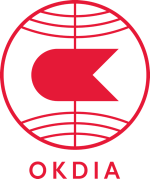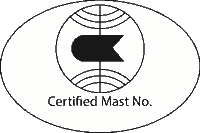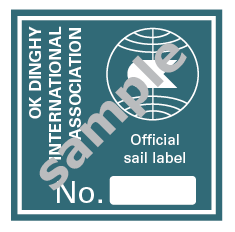In early July the OKDIA Secretary and the Chairman of the Technical Committee met with World Sailing technical staff in London to discuss the current class rule proposals and several other matters regarding class rules and wider class matters. The current proposals were approved in principle, giving us the confidence to take them into the AGM.
World Sailing were also impressed with the standard of technical competence within the class. As the class conInues its recent growth it is important that we maintain this level.
A few days later and the day before the 2018 AGM in Warnemunde, a meeIng of the Technical Committee was held to discuss the proposals and a few new suggesIons. Measurers and manufacturers were also invited. The discussions went well and a couple of amendments were made to the proposals for the AGM. These amendments can be found in the AGM minutes. The minutes of the TC meeIng can be found below.
The AGM was run is such a way that any proposals that were not going to pass were not voted on. All of the proposals except No 1 on CerIficaIon were voted on and passed. The indicaIon from the meeIng was that the TC should go back and take another look at the purpose and intent of this proposal.
Technical Committee, Measurers and Manufacturers meeAng 7th July 2018
Warnemunde, Germany
Minutes
Attended.
Chair – Alistair Deaves
Chief Measurer – Dick Batt
IM – Klaus Luttkus
OKDIA Secretary – Robert Deaves
TC – Jesper Standberg, Greg Wilcox, Alex Scoles, David Bourne (on behalf of Bill Bradburn) Manufacturers – Chris Turner (Ovingtons), JS, GW, AS
Measurers – MarIn von Zimmerman (GER), Ralf Tietje (GER)
1. Bevels.
The proposal 9 in the 2018 AGM agenda was discussed with the vast majority being in favour of opIon B. The feeling of the meeIng was that opIon A would leave too much scope for the “look” of the boat to be altered.
2. Cockpit Liners.
The meeIng then discussed cockpit liners. JS was concerned that the introducIon of a rule to allow liners would (1) produce more weight concentrated boats, especially around the
centerboard case capping, and (2) would make it more difficult for home builders to make compeIIve boats. Also that boats should be able to be measured to the current rules. AS, CT and RD (regarding the Synergy moldings) pointed out that current cockpit liners weigh much less that two plywood bulkheads and that providing the details in the proposal were adhered to we would not see heavy liners being used. The 70mm for the outside flange was chosen as this allows floor mats to fill the enIre area inside the flange thus making a better looking product.
3. Three piece masts.
The meeIng did not have any objecIon to this as it was unlikely a three-piece mast could be made faster than a two or one piece. The only issue would be interchangeable secIons and so event marks needed to ensure that masts stayed together during an event.
4. Gooseneck Pin
There was a discussion about including the pin/bolt in the weight of the mast. This was intended to stop the progression to ever more expensive and lighter bolts. The meeIng rejected the idea.
5. Hull CoaAngs
The new rules do not specify any limitaIon on the types of coverings that are allowed, as they do for spars and hull appendages. The meeIng agreed that they should be limited to paint, varnish, gelcoat, resin and vinyl. Also that the TC should monitor new products
6. Standard mast length
Several years ago AD asked all the builders for their building measurements in items such as deck height and pintle distance. As a result, some builders changed their molds and most deck heights at the mast are now 465-470mm. It was decided not to look to introduce a standard mast length at this stage but to publish all the available data with a set of recommended numbers for manufacturers to build to.
6. Open Forum
1. Weighing hull with centerboard. Would only work with engraved cerIficaIon numbers and a maximum weight. Idea rejected.
2. VerIcal Rudder. JS said the Danes were keen to look at this. JS will make a prototype and do some tesIng.
7. Padding
InterpretaIons of the padding rules have caused much confusion in recent years as builders seek to allow their customers to hike higher and further out. Ader some discussion it was agreed to modify the current proposal to specify that padding on the gunwale must fit within a box of 10mm verIcally by 35mm horizontally, on top of the 35mm x 35mm exisIng box. This allows padding on the sheerline to be lower than padding on the gunwale providing both are no more than 10mm above the sheerline. AD to arrange for a new drawing to be made with the padding box rule included.
Meeing closed.


